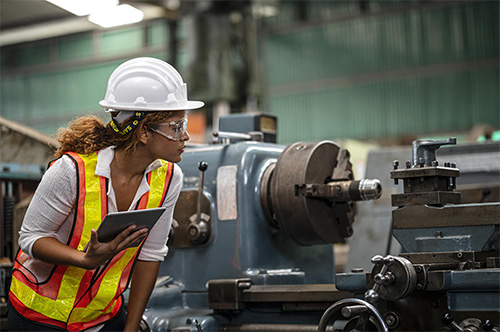
Managing obsolescence can make an already challenging job of managing asset lifecycles start to seem overwhelming. However, there are many strategies and tools that can make this all-important job easier, including using a Computerized Maintenance Management System (CMMS) to automate asset data collection and streamline the process.
What is Asset Obsolescence?
Assets which you expected to last for decades can become obsolete for a variety of reasons.
As technology advances and new technologies emerge, your old assets will become outdated. Some will begin to perform too slowly or inefficiently to justify continuing to maintain and repair them. Even if your asset is still functioning perfectly well, it may not be able to match the performance level of newer equipment, which means that your operation will struggle to keep up with your competition.
If you’re in a highly regulated industry, then any change in regulations might also result in asset obsolescence. Furthermore, changes in environmental regulations, or in health and safety regulations, can suddenly make certain assets unusable.
In other cases, manufacturers may stop making spare parts for equipment, as they phase out old models in favor of newer models. This makes it difficult to keep using your existing assets, even if they are still in good operating condition. In the long run, finding new suppliers for these spare parts may not be time or cost-effective for your operations compared to upgrading the equipment.
Why Does Managing Obsolescence Matter?
Running an operation with obsolete equipment is a risky strategy. You risk falling behind your competition when it comes to production efficiency or risk falling afoul of regulations. You also risk unplanned downtime, if you run out of spare parts you rely on to fix your equipment.
Eliminating obsolete materials can simplify your warehouse management, making it easier to organize critical parts and make space for what you need. That doesn’t mean that you have to follow every new trend and buy the newest models of every asset. Ideally, your equipment is a solid investment that should last you a long time.
Successfully managing obsolescence means carefully assessing which assets should be replaced, and which should not. It means making informed decisions about which new developments are worth keeping up with, and which new models are worth the capital investment.
How Do You Manage Obsolescence?
Managing obsolescence is significantly easier when you can leverage your CMMS to collect and analyze data. Your CMMS can track the expected end-of-life for each asset (although life-expectancy alone should not determine obsolescence).
You can use a CMMS to make calculations about when to expect obsolescence. Start by tracking how long all the component parts of your asset have been on the market. You can also track when new models are introduced and what those new models offer.
Putting all this data in one place makes it easier to perform risk assessments and cost evaluations. Is it riskier (or more expensive) to continue with your current equipment versus investing in new equipment?
Does Managing Obsolescence Mean Replacing Equipment?
The short answer is, it depends. Equipment failure accounts for 42% of unplanned downtime and costs the industry about $50 billion every year. In some cases, replacing legacy equipment can significantly reduce the risk of unplanned downtime.
That’s not always the case, though.
In some cases, regulations may actually make it difficult to replace your equipment. In other cases, the cost of buying a new asset is too high compared to continuing to maintain and repair legacy equipment. At times, it makes more sense to stockpile the spare parts needed to repair the asset if it breaks down. Condition monitoring also may affect what parts and how many you need on hand.
In addition, a comprehensive condition monitoring strategy could help you keep that legacy equipment running longer so that you don’t need to replace it until you have more room in your budget. While there’s no one answer when it comes to obsolescence, a CMMS can help you make data-driven decisions.
Using a CMMS to Track and Manage Parts
In addition to monitoring asset health and lifecycle data, a CMMS can do wonders for your inventory management. If you’re still using a manual inventory system, you are probably struggling to track the location of all your parts. Even the best-organized manual system can run into problems, leaving you with too much overstock after you order more parts than you need.
A CMMS can solve these problems so that you’re no longer stuck with a warehouse full of obsolete parts. Tracking capabilities can ensure that you always know where every single part is located, even if you’re working across multiple plants. A CMMS can also help you get insight into supply chain issues, identifying which parts tend to move slowly so you can plan ahead.
You can also organize and cross-reference your inventory so that it’s easy to search and parts don’t get ordered repeatedly by mistake.
CMMS and Regulatory Compliance
If you’re in a highly regulated industry like pharmaceuticals or medical devices, then you may already be using a CMMS to maintain regulatory compliance.
You can also configure your eMaint CMMS to send your team reminders about compliance tasks or safety inspections.
You can use this capability in obsolescence management too, by configuring eMaint to alert you when new regulations that will impact your equipment are coming into effect.
The result? Inventory and assets that are in top operating condition and can be relied on. You’ll have less downtime – and, if applicable, better compliance – with a strong obsolescence management plan in place.
